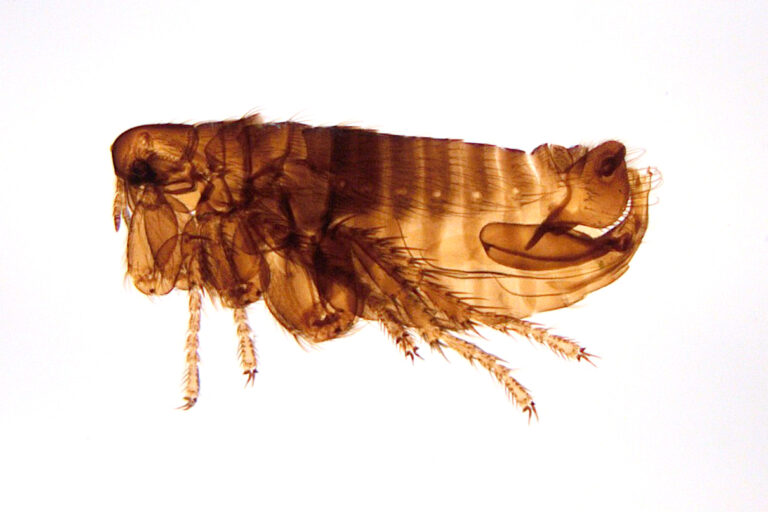Fox Flea
Chaetopsylla globiceps

Order: Siphonaptera (Flöhe)
Family: Vermipsyllidae
AREA OF ORIGIN: Eurasia
Hosts:
Fox – Carnivores
Fox – Carnivores
Chaetopsylla globiceps is found in Europe, Asia, and North Africa, mainly parasitizing foxes, hence its common name, the fox flea. These ectoparasites can reach sizes of up to 5 mm and, like all insects in this order, they are wingless. They undergo metamorphosis from egg to larva, then to a pupal stage, and finally to the adult form (holometabolism) (Brinck-Lindroth et al. 2007). Adult fleas feed on the blood of their host and their piercing-sucking mouthparts can cause skin irritations. They are also known to transmit various pathogens such as viruses, bacteria, and parasites, posing an infection risk to animals and humans (Genchi 1992).
Human pathogenicity: While it is rare, fox fleas can infest humans.
Exemplary Sources
-
Brinck-Lindroth & Smit (2007)The fleas (Siphonaptera) of Fennoscandia and Denmark. Leiden, Boston : BRILL (Fauna entomologica Scandinavica, v. 41).
-
Genchi (1992)Arthropoda as zoonoses and their implications. In : Veterinary Parasitology, vol. 44, n° 1-2, p. 21–33.